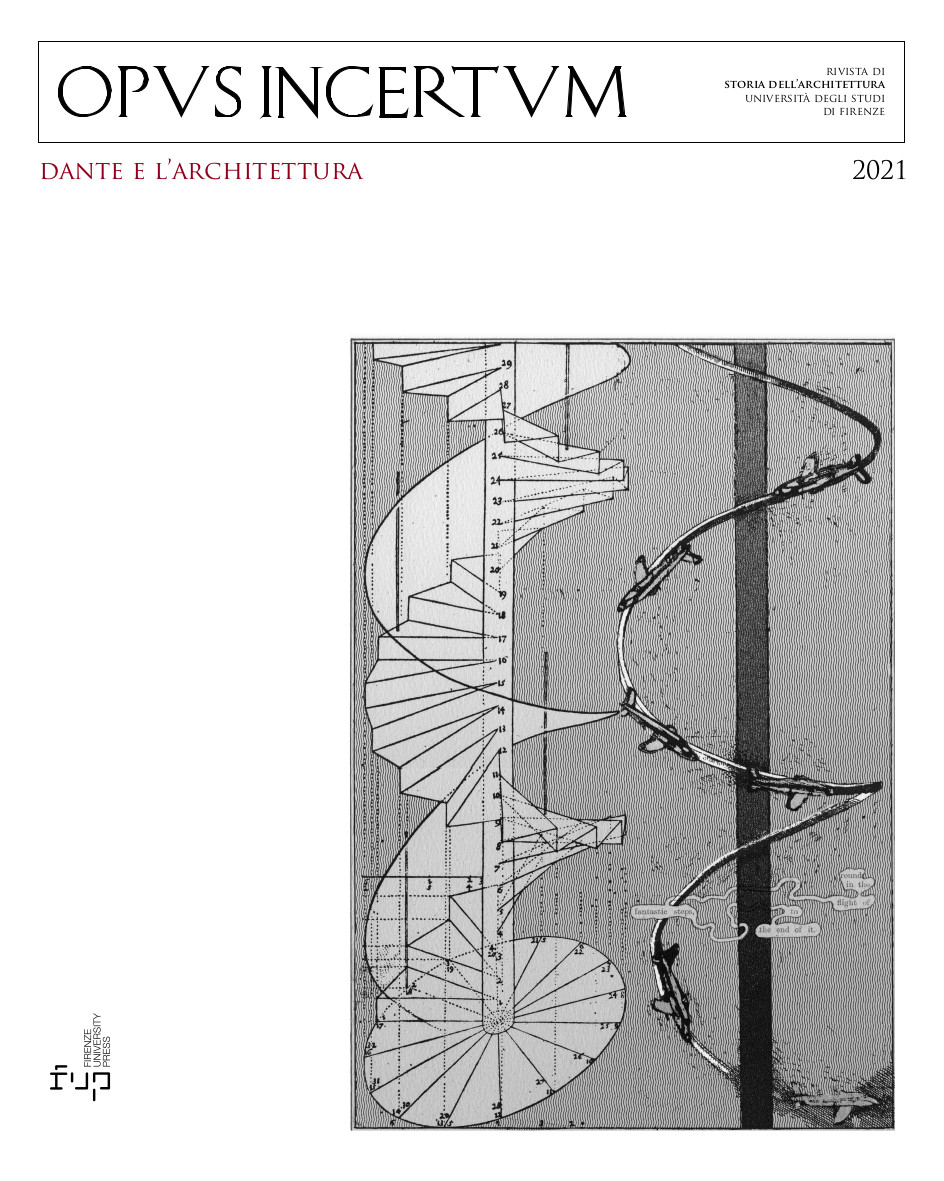Published 2021-12-11
Keywords
- Florence,
- urbanism,
- architecture,
- Dante
How to Cite
Abstract
The dialectic between tradition and innovation is undoubtedly a powerful engine of the creative process, which makes every discourse on Dante and his time always current. In the period between 1265 and 1301 the process for defining the identity of the city and the renewal of culture was underway in Florence. In those same years Dante and Arnolfo di Cambio were facing problems of language, just as the urban landscape was being subjected to a partial replacement and an apparently limitless progressive accumulation. The new public spaces favoured a reflection on the view of the buildings, which are imposing not only in terms of size or height, but also as a result of their measured and meditated relationship with the void that surrounds them. Most of the monumental buildings were conceived and built during the last years of the century, at the height of the Popolo regime. The focus is on the isolation and unity of public (palaces, prison) and religious (convents) complexes with the involvement of masters equipped with new instruments (drawing, tools) useful for design and executive control. The new conception of space and the relationship between public and private produces unprecedented solutions: straight and ‘perspective’ streets, entrance halls to palaces, vast unitary basilicas. The construction and renewal of small private buildings brought about the replacement of the stony and wooden image of the city with one softened by plaster, brick and greenery.



